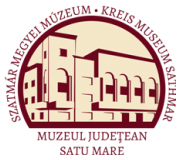Ciubotă, Viorel (szerk.): Patrimoniu multietnic (Satu Mare, 2009)
of forming a regional identity, the target for the identity of the ethnic group prevailed. The Hungarian society from Ugocea had three layers, according to their origin. The main community is represented by the local Hungarian population, of Calvinist or Roman-Catholic confessions, which has survived the desolations over the centuries during the Middle Ages (this category also comprises the communities of Saxons and Flemish who were assimilated - in Sasovo, Batar, Korolevo etc.. - in the 14th and 15th centuries). The second layer are the Roman Catholic Schwabs assimilated in the 18th -19th centuries (Turulung) and, the third one is represented by the Greek Catholic and Roman Catholic Rusini assimilated in the same period (Porumbeşti, Nevetlenfalu (Dyakove), Cidreag, Fertosalmas (Zabolottya) etc. The Second World War brought that tragic chain of events, which best define today the memory of the German and Hungarian people (and not only) of Ugocea. In the southern part of the former county, in the Romanian side, this event is known as the Schwabs’ Deportation, and in the north, in Transcarpathia (Ukraine) it’s called Malenkij robot, meaning “small job”. The same event is known under different names; thousands of people were deported to remote areas of the Soviet Union and forced to work for 3-5 years to rebuild the empire. Romanian men and women of German origin, German and Hungarian men from Transcarpathia were sent to the Soviet camps. Not only Hungarians and “Germans” have arrived in camps, but also Romanians and Ukrainians joined them in suffering. Peretar şvăbesc. Colecţia Muzeului Judeţean Satu Mare Швабська настінна вишивка, Колекція Повітового музею Сату Mape Sváb falvédő. Szatmár Megyei Múzeum gyűjteménye Schwab wall carpet. Collection of Satu Mare County Museum 134
